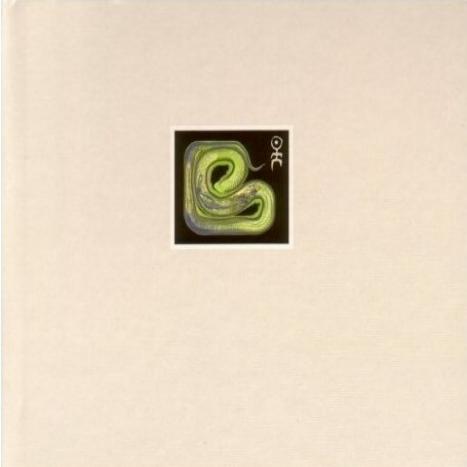Where once Einsturzende Neubauten improvised by drilling through the floor of the ICA and pummelling what audience there might be into quivering supplication, Jewels sees them adopting a more subtle, eloquent approach. In a similar vein to Brian Eno’s Oblique Strategies, Jewels was conceived with the band picking cards from a hat, and then constructing tracks by following the commands written thereupon. An industrial Scrabble, if you will. These instructions took the form of cryptic references to Neubauten’s work, from music to instrumentation to relationships, that were then used to recreate the 15 tracks that make up Jewels . Blixa Bargeld has called this process a “subversive interpretation game”.
It’s a fascinating approach, and one which works surprisingly well as a complete album (the Jewels were originally released a track at a time, month by month, to the Neubauten supporters). It unites the slightly portly Neubauten of 2008 and the angry urchins who made mincemeat of a tired and isolated Berlin back in the early ’80s. Indeed, this glance over the shoulder seems to be very much part of the current Neubauten mindset. When I saw them perform one of their superlative live shows just last week, Blixa Bargeld explained how one new track was developed from a guitar part he first played in a cellar in 1982, with his amplifier used to plug the entrance. From that claustrophobic birth, Bargeld says he developed the piece as “a dialogue between the old Blixa and the young Blixa. Or the old Blixa, and the new Blixa.”
Their recent albums (Perpetuum Mobile, Silence Is Sexy) have been marked by an ever increasing melodious bent, with gloriously unearnest B&Q-rave bangers that resound with heart and soul. Bargeld’s deconstructionist “game” takes this and seamlessly welds it to some of the more aggressive material of yore.
This is abundantly clear from the off, where ’Ich Komme Davon’ builds from compressed air hiss and minor percussive elements into a being of glorious, triumphant and brassic pomp. It, remarkably, manages to fit all this in and give you plenty of change from three minutes. ’Mei Ro’, shows that Neubauten are still masters of the rough and improvised noise, water and metal coursing beneath Bargeld’s snapped lyrics. Crucially, it’s only two minutes long. ’Ansonsten Dostojevsky’, one of the finest tracks here, hulks along with coiled spring beats and ship’s hold clangs contrasting with a melodic glockenspiel effect. It all build inexorably to the longest track ’Die Ebenen werden nicht vermisch’, monastic chants and an oil derrick throbbing bass giving way to a climax of screams and scattered metal.
Jewels sees Einsturzende Neubauten underlining their position as the premier exponents of experimental industrial music. They’re certainly not desperately cool, the experimental crowd oft preferring the widdly laptop piffling of hip Americans (the perennial problem of fear of both the gothic and Teutonic), but none have the power, the eloquence, the panache of Blixa Bargeld and his merry cohorts. This is a collective who have always dealt with taking the elemental, both in tools deployed and sound, and reassembling it into a distinctive, vibrant whole. By applying this approach to their very selves, they have created a celebration of everything they have achieved over the past quarter of a century, each Jewel sitting proud and violent on Einsturzende Neubauten’s titanium crown.


